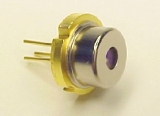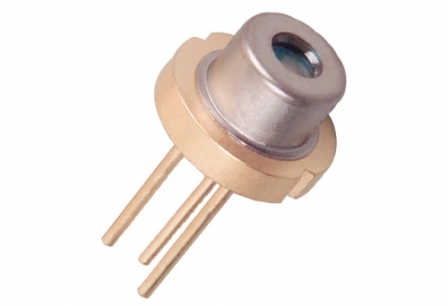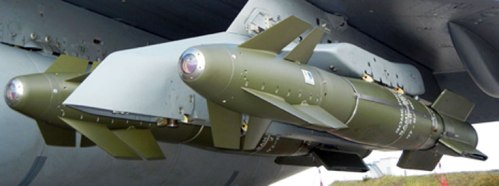Laser infrared diodes — device and application
 The development of infrared diode technology took more than a decade, and finally, thanks to the development of multi-junction double heterostructures in the GaAlAs system, a significant and therefore technologically promising increase in quantum yield was achieved. infrared diodes.
The development of infrared diode technology took more than a decade, and finally, thanks to the development of multi-junction double heterostructures in the GaAlAs system, a significant and therefore technologically promising increase in quantum yield was achieved. infrared diodes.
The achievement of success in this area is due to the almost 100% internal quantum efficiency, the "electronic confinement" effect in the active region and the "multicarrier" effect. This is due to the effect of «multiple crossing» directed to the bottom side of the crystal and reflected from the side and top side, that is, the multiple reflected photons, without being absorbed in the active region, now contribute to the output radiation.
An example of this is the "Voskhod" plant, produced at the Kaluga plant multi-conflict double heterostructures of type ESAGA-140 with a p-type active region 2 μm thick, doped with Ge and Zn, emitting regions containing 30% AlAs, and a passive region containing from 15 to 30% AlAs. The total thickness of such a heterostructure is 130-170 μm.The upper layer of the structure has n-type conductivity. The characteristic wavelengths for these structures at the maximum of the emitted spectrum are 805, 870 and 940 nm.
Today, infrared diodes are widely used in television systems with an electro-optical converter and in charge-coupled devices, in video surveillance systems, infrared lighting, remote control, optical communication, as well as in medical equipment.

To create directly lasers Based on a double heterostructure, both aluminum-gallium arsenide AlGaAs and gallium-arsenide GaAs are often used, and the diodes produced by this technology are called diodes with a double heterostructure... The advantage of such lasers is that the active area (the area of existence of holes and electrons) is contained in a thin medium layer and therefore many more electron-hole pairs provide amplification, that is, the radiation is amplified as efficiently as possible.
Infrared laser diodes with wavelengths from 780 to 1770 nm and powers from 5 to 150 mW, widely available on the market today, are used not only in CD and DVD players. Single-mode infrared laser diodes, as sources of monochromatic coherent radiation, are applicable to optical data transmission systems, control and measurement equipment, medical technology, security and pumping systems solid state lasers.

An important distinguishing feature of infrared radiation is its "invisibility". Thanks to the infrared laser, an invisible spot can be obtained, which can, however, be observed with a night vision device.
This property of infrared lasers is also due to their rather wide use in military fields, since the work with laser guidance systems is now easier to hide from the enemy. The transmitter itself can be located even on an aircraft, even on the ground, and at the same time ensure high accuracy of hitting missiles and "smart" bombs, which are guided by the infrared spot reflected from the target.
